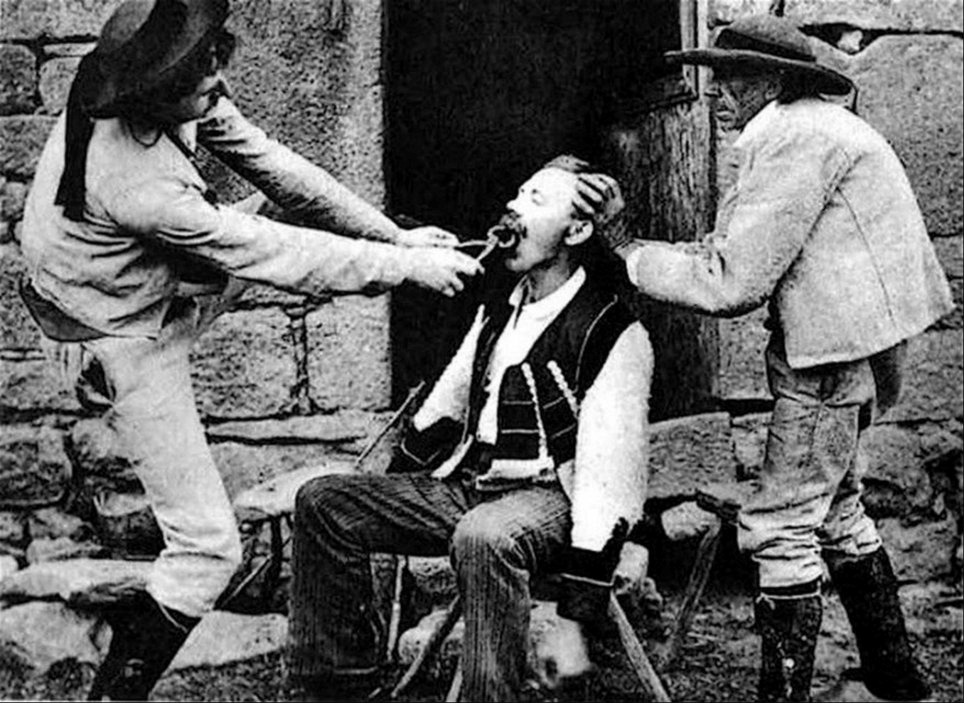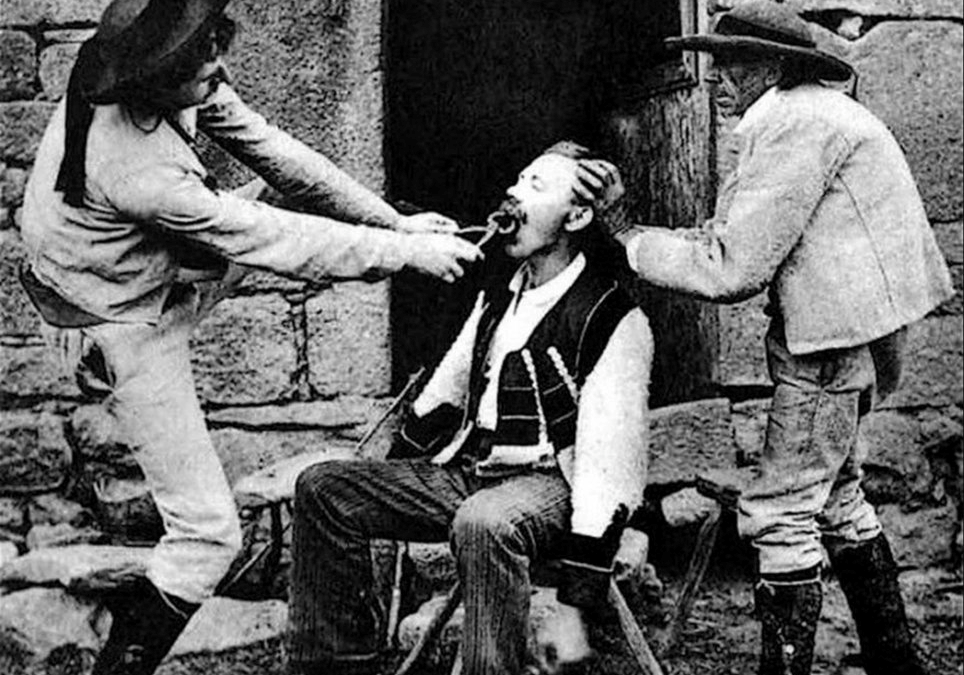
Oftentimes I hear folks say that they wish they’d lived “in the good old days. Usually, I reply, “The good old days really weren’t all that good.”
Recently, Professor Joanna Bourke wrote “Agonizing toothache, horrifying extractions and barbaric tools have cast a large shadow over our dental past.” No truer words were ever spoken.
Trained dentists didn’t exist until the 1800s and prior to that the care of the nation’s mouths was in the hands of blacksmiths and barbers who doubled as surgeons.
Like something right out of the Spanish Inquisition, they wielded pliers for pulling teeth or devices resembling bottle openers which relied on the hapless patient’s jaw for leverage. It wasn’t uncommon to accidentally dislodge the patient’s jaw during a “procedure.”
The profession was a back-street horror show for hundreds of years, run by ham-fisted amateurs who were sure to leave their patients in agony, that is, if they survived.
The arrival of affordable sugar from the West Indies in the mid-1600s led to soaring cases of tooth decay. Extraction was almost the only treatment available for a toothache until the middle of the 19th century and it wasn’t something to look forward to. Thousands of people died from botched treatment, infections and other complications. so it was hardly surprising that the dentist’s chair was regarded with sheer terror. For a time in the 18th century transplanting teeth from dead to the living was popular. A small fortune could be earned by grave robbers converging upon battlefields and pulling teeth from the dead and selling them to be used as transplants. If you were lucky there might be a shot of whisky to numb the pain but otherwise all that was offered was a prayer. Until relatively recently rotten and neglected teeth were part of daily life. The invention of the mass-produced toothbrush in 1780 helped but it was too expensive for the poor and was often a “community toothbrush.”
The drill was invented during the Victorian Era. Operated by a foot pedal and a belt that turned the drill, the process was slow but it sometimes enabled dentists to drill away the decayed part eliminating the painful extraction.
Out West one of the hazards a dentist had to deal with were temperamental gunfighters. Outlaw Clay Allison, suffering from a toothache, visited a dentist in Cheyenne, Wyoming, who began drilling on the wrong tooth. After having his bad tooth repaired by a different doctor, Allison returned to the offending dentist, pinned him down, and extracted a tooth with a pair of pliers.
There had been something available for quite some time but it took almost a hundred years before it became a common treatment for pain. The first chemical used for pain relief was nitrous oxide, also known as laughing gas, was invented in 1799. Nitrous oxide, commonly known as “laughing gas,” due to its euphoric effect upon those who inhale it, was introduced by an English chemist named Joseph Priestley. It became popular among the upper class to have “laughing gas parties” where everyone got high. Some believed it resulted in a powerful spiritual and mystical experience. One even claimed it revealed to him the “secrets of the universe.” Unfortunately for the inhaler the knowledge they gained quickly faded when the effects wore off.
It first became popular for surgery and dentistry due to its anesthetic and analgesic effects in 1844, however the availability of equipment to produce enough gas for medical purposes along with the fact that it was slow to gain acceptance by doctors and physicians delayed its common use until the 1870s.
In 1876 Joseph Clover invented the “gas-ether inhaler” and it became common to initiate all anesthetic treatments with a mild flow of nitrous oxide and then gradually a stronger ether or chloroform. It remained in use until the 1930s. Today hospitals use a more advanced anesthetic machine. It still uses the same principle used by Clover’s invention that initiates the anesthesia with nitrous oxide before administering a more powerful anesthetic.
In the early part of the 20th century dentistry was still so expensive that some people chose to have all their teeth pulled to spare themselves a lifetime of pain. Having all your teeth removed was considered the perfect gift for a 21st birthday or a newly married bride. Thank heaven for progress.






